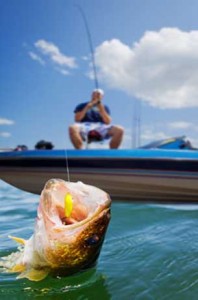
MILLE LACS LAKE – Outdoors – Minnesota is facing problems with the sport fishery and with declining moose populations. Efforts from the Minnesota Department of Natural Resources have resulted in the cancellation of the 2013 Moose Hunting Season in Minnesota. A precipitous 35 percent decline in the population from 2012 to 2013 prompted DNR to suspend moose hunting in Minnesota and underscores the need for this project.
Minnesota DNR Conservation Efforts
Faced with a declining walleye population, the Minnesota Department of Natural Resources (DNR) are changing fishing regulations on Mille Lacs Lake in 2013 to protect the lake’s younger and smaller walleye.
The agency shared potential regulation options with citizens Wednesday, Feb. 27, during a public input gathering at a town hall near Garrison.
“We are fully committed to doing whatever is necessary to improve the walleye population as fast, fairly and efficiently as possible,” said Dirk Peterson, DNR fisheries chief. “Mille Lacs is one of the premier walleye lakes in Minnesota and continues to be a great place to fish. However, we need to reduce walleye mortality on certain sized fish and that will translate into different regulations for the upcoming season.”
DNR fisheries experts are considering three length-based regulation options to ensure the state’s walleye harvest is below the safe harvest level of 178,500 pounds and combined state-tribal safe harvest level of 250,000 pounds. The options would allow anglers to keep walleye from 17- to 19-inches, 18- to 20-inches or 19- to 21-inches and, potentially, one trophy walleye longer than 28 inches. The DNR has not yet decided which 2-inch length option it will select.
The agency also is considering additional regulations to reduce walleye mortality. Options include an extended night fishing ban, reduced bag limits, the use of circle hooks for live bait and live bait restrictions. New regulations to potentially increase the harvest on smallmouth bass and northern pike also are being discussed as both are predators of walleye and the prey that walleye eat. All of these options would reduce walleye fishing mortality to varying degrees.
A decision on the slot limit length, daily bag limits, and other options is expected in early March. Currently, anglers must immediately release all walleye from 17- to 28-inches; the possession limit is four with only one longer than 28 inches. “The DNR is taking a broader look at regulation options because the safe harvest is at the lowest level since treaty management began in 1997, and a new length-based regulation by itself may not be sufficient,” Peterson said. “We are listening to anglers, business owners and others to identify a set of options that protects small fish and is as acceptable as possible to those who enjoy and economically benefit from the lake.”
Peterson said it is especially important for regulations to help conserve the lake’s large 2008 walleye year class because currently no strong year class is coming up behind these 16- to 17-inch fish.
Walleye in the 14- to 18-inch range, especially males, have been harvested heavily. That’s because state slot limits allowed anglers to keep this size fish and tribal nets also selectively catch fish in this size range.
Protective smallmouth bass and northern pike regulations may also have played a role in decreasing walleye numbers because they prey on young walleye and are competitors for the forage species walleye prey upon.
For Mille Lacs anglers, a 2-inch harvest slot limit would not be unprecedented. Two-inch harvest slots were implemented in 2001, 2002 and 2007. Similarly, angler kill has been below the 2013 allocation four of the past 10 years.
Peterson said one of the emerging challenges of managing Mille Lacs is the complexity added by the evolving biological implications of Eurasian watermilfoil, spiny waterfleas and zebra mussels. The impacts and interactions of these unwanted aquatic invasive species are not well understood but are making the lake increasingly unpredictable.
For example, Eurasian watermilfoil has created more habitat for pike and bass. Zebra mussels are changing the nature of bottom substrates. Spiny water fleas may be competing with larval fish for small zooplankton. Climate and weather conditions – namely warmer weather patterns – also have resulted in low tullibee numbers and higher hooking mortality due to warmer water temperatures.
“There’s a lot we know about Mille Lacs Lake, but it is a complex system and there’s much we don’t know, too,” Peterson said. “What anglers should know is that we are committed to fixing this problem and providing quality walleye fishing for generations to come.”
The DNR has raised a number of conservation concerns this past year with Chippewa bands based on walleye population structure changes that may be linked to past state and tribal harvest strategies.
Based on population estimates, the bands voluntarily reduced their walleye harvest allocation from 142,500 pounds to 71,250 pounds for the 2013 fishing season, which allowed a higher safe harvest level for state anglers.
The DNR will take additional public comments on the proposals by email at millelacs.dnr@state.mn.us.
More information on Mille Lacs Lake and its fisheries can be found at www.mndnr.gov/millelacslake.







